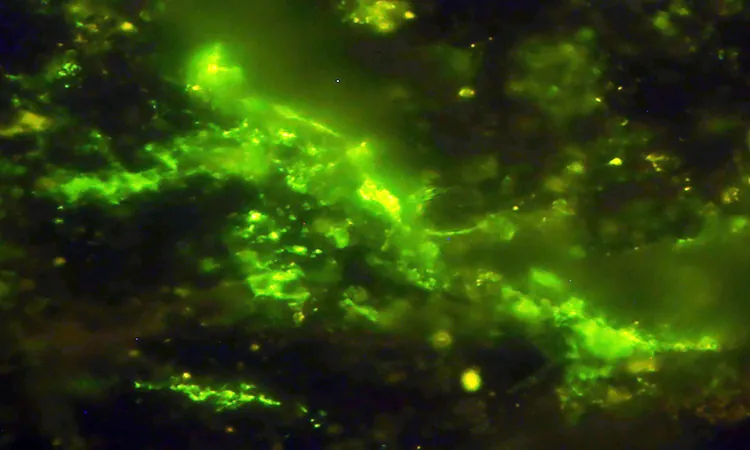
Living Microbes Discovered in 2-Billion-Year-Old Rock: A Breakthrough for Life's Longevity
2025-04-13
Author: Arjun
Ancient Microbes Found Deep Within Earth's Crust
In a remarkable scientific breakthrough, researchers have unearthed living microbes encased in a 2-billion-year-old rock deep beneath the Earth's surface. This astonishing find challenges our perceptions of life’s resilience and longevity.
Excitement from the Research Team
Lead researcher Yohey Suzuki, an associate professor at the University of Tokyo, expressed immense excitement about the discovery. "We were uncertain if such ancient rocks could harbor life," he stated. Previously, the oldest microorganisms found were in rocks only 100 million years old, making this discovery truly groundbreaking.
Source of the Ancient Rock
The ancient microbial home was retrieved from the Bushveld Igneous Complex (BIC) in northeastern South Africa. This vast geological formation, covering an area comparable to Ireland, is rich in mineral deposits, notably around 70% of the world’s platinum supply.
An Ideal Habitat for Microbial Survival
The BIC formed through slowly cooled magma and has remained relatively unchanged over eons, creating a stable environment conducive for microbial life. The research team extracted a 30-centimeter-long core sample from approximately 50 feet underground, where the rock can be as thick as 5.5 miles.
Analyzing the Ancient Microbes
Upon examination of thin slices of the rock, the researchers discovered densely packed microbial cells trapped in tiny, clay-sealed fractures. This natural barrier prevented external contamination, allowing the microbes to remain nearly unchanged for millions of years, living in a sort of geological time capsule.
Evidence of Indigenous Microbial Life
To confirm the microbial cells were indeed native to the rock and not contaminants, the team employed advanced imaging techniques including infrared spectroscopy, electron microscopy, and fluorescent microscopy. By staining the DNA and analyzing proteins within the surrounding clay, they verified the organisms were alive.
Implications for Life Beyond Earth
This extraordinary discovery also opens up tantalizing possibilities for extraterrestrial life. If microbial life can endure in such extreme conditions on Earth, might similar life forms exist elsewhere, such as on Mars? Suzuki expressed that the upcoming Mars missions present exciting prospects for uncovering ancient life, anchoring hope for finding preserved organisms in Martian rocks.
Living Time Capsules: New Insights into Early Life
These ancient microbes, likened to living time capsules, offer invaluable insight into early Earth’s conditions and how life adapted to extreme environments. This finding invites us to rethink the boundaries of life and its remarkable adaptability.
A New Era in Microbiology and Geology
Ultimately, this discovery expands the horizons of both microbiology and geology, paving the way for new avenues of research focused on life’s endurance in the most challenging habitats. As scientists delve deeper into these ancient ecosystems, we may uncover profound secrets about life's persistence and its potential beyond our planet.
The full study is published in the journal Microbial Ecology, and it represents just the beginning of our quest to understand the hidden narratives of life that linger in Earth's most remote corners.




 Brasil (PT)
Brasil (PT)
 Canada (EN)
Canada (EN)
 Chile (ES)
Chile (ES)
 Česko (CS)
Česko (CS)
 대한민국 (KO)
대한민국 (KO)
 España (ES)
España (ES)
 France (FR)
France (FR)
 Hong Kong (EN)
Hong Kong (EN)
 Italia (IT)
Italia (IT)
 日本 (JA)
日本 (JA)
 Magyarország (HU)
Magyarország (HU)
 Norge (NO)
Norge (NO)
 Polska (PL)
Polska (PL)
 Schweiz (DE)
Schweiz (DE)
 Singapore (EN)
Singapore (EN)
 Sverige (SV)
Sverige (SV)
 Suomi (FI)
Suomi (FI)
 Türkiye (TR)
Türkiye (TR)
 الإمارات العربية المتحدة (AR)
الإمارات العربية المتحدة (AR)